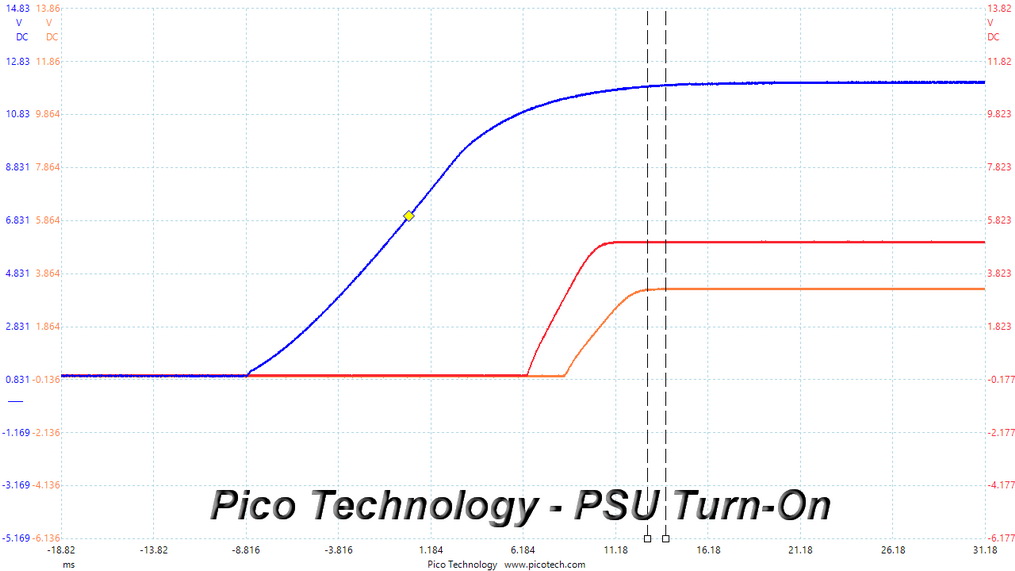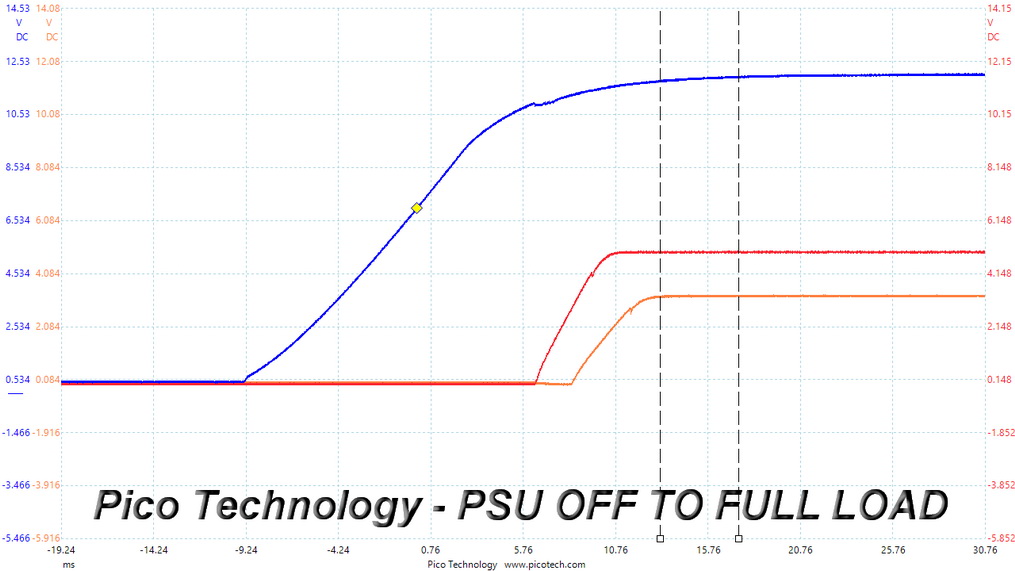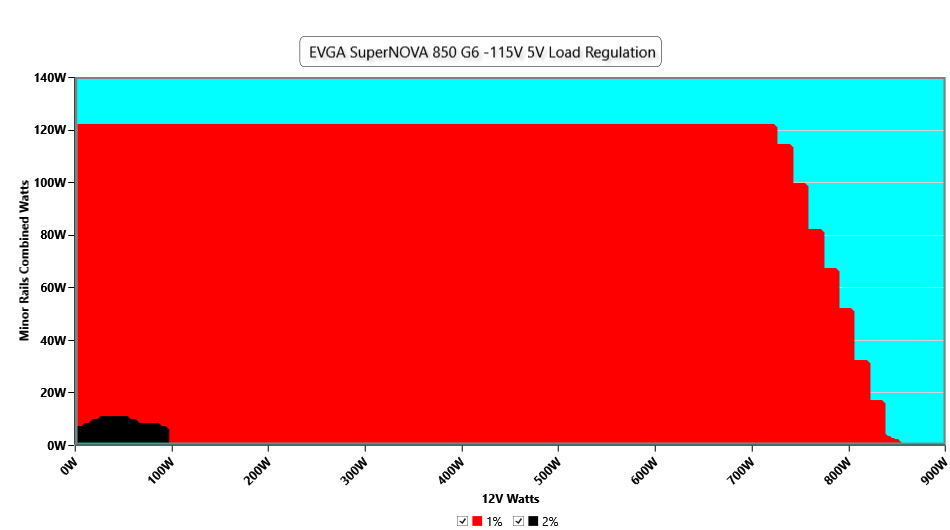Why you can trust Tom's Hardware
Protection Features
Check out our PSUs 101 article to learn more about PSU protection features.
|
OCP (Cold @ 30°C) |
12V: 99.6A (140.68%), 12.075V |
|
OCP (Hot @ 43°C) |
12V: 99.6A (140.68%), 12.083V |
|
OPP (Cold @ 31°C) |
1202.85W (141.51%) |
|
OPP (Hot @ 44°C) |
1203.66W (141.61%) |
|
OTP |
✓ (167°C @ 12V Heat Sink) |
|
SCP |
12V to Earth: ✓ |
|
PWR_OK |
Proper operation |
|
NLO |
✓ |
|
SIP |
Surge: MOV |
This unit's OCP triggering points are very close under both hot and normal conditions, and the same goes for OPP. Although the 12V triggering point is above the 130-135% region, load regulation and ripple suppression are fine, a clear sign that the platform can handle the additional load without any issues. OTP is reasonably set, and the other protection features we evaluated also work well.
DC Power Sequencing
According to Intel’s most recent Power Supply Design Guide (revision 1.4), the +12V and 5V outputs must be equal to or greater than the 3.3V rail at all times. Unfortunately, Intel doesn't mention why it is so important to always keep the 3.3V rail's voltage lower than the levels of the other two outputs.

DC Power Sequencing Scope Shots


No problems here since the 3.3V rail is always lower than the other two.
Cross Load Tests
To generate the following charts, we set our loaders to auto mode through custom-made software before trying more than 25,000 possible load combinations with the +12V, 5V, and 3.3V rails. The deviations in each of the charts below are calculated by taking the nominal values of the rails (12V, 5V, and 3.3V) as point zero. The ambient temperature during testing was between 30 to 32 degrees Celsius (86 to 89.6 degrees Fahrenheit).
Load Regulation Charts

Load Regulation Graphs



Efficiency Graph
Ripple Graphs
The lower the power supply's ripple, the more stable the system will be and the less stress will be applied to its components.

Ripple Suppression Graphs



Infrared Images
We apply a half-load for 10 minutes with the PSU's top cover and cooling fan removed before taking photos with a modified FLIR E4 camera able to deliver an IR resolution of 320x240 (76,800 pixels).
Get Tom's Hardware's best news and in-depth reviews, straight to your inbox.

IR Images





The hottest parts are the main transformer and the 12V heat sinks. Temperatures are not that high given the applied load, the operating conditions, and the lack of active cooling. It would be ideal, though, if the polymer caps on the VRMs were further away from the 12V heat sinks, as these can get quite hot under tough conditions and high loads.
MORE: Best Power Supplies
MORE: How We Test Power Supplies
MORE: All Power Supply Content
Current page: Protection Features, DC Power Sequencing, Cross-Load Tests and Infrared Images
Prev Page Load Regulation, Hold-Up Time, Inrush & Leakage Current, Efficiency and Noise Next Page Transient Response Tests, Timing Tests, Ripple Measurements and EMC Pre-Compliance Testing
Aris Mpitziopoulos is a contributing editor at Tom's Hardware, covering PSUs.
-
Johnpombrio I own 3 of the EVGA Supernova 850 G2 power supplies with LOTS AND LOTS of extra modular cables 😊. I didn't know that they were legendary, heh. The specs on the side of the PSU are the same as the G6 so I expect that the main difference is the efficiency. I turned on ECO mode and I doubt the fan ever spins.Reply -
taz-nz The biggest improvement is they got rid of the green chrome fan grill from the G5 series.Reply
If it's as reliable as the G2, G3 and G5 series, I look forward to building a lot of PCs with them.
It would be nice if they stepped up their game in cheaper non-modular models, they are significantly lower quality. -
SteelTeel Why is your noise measurement so different from what EVGA posts on its website? Are these measurements carried out with ECO mode enabled?Reply
-
wONKEyeYEs Just picked up a EVGA G1+ 850 W 80+ Gold.Reply
If anything goes wrong I know that I can count on EVGA's
excellent service.
